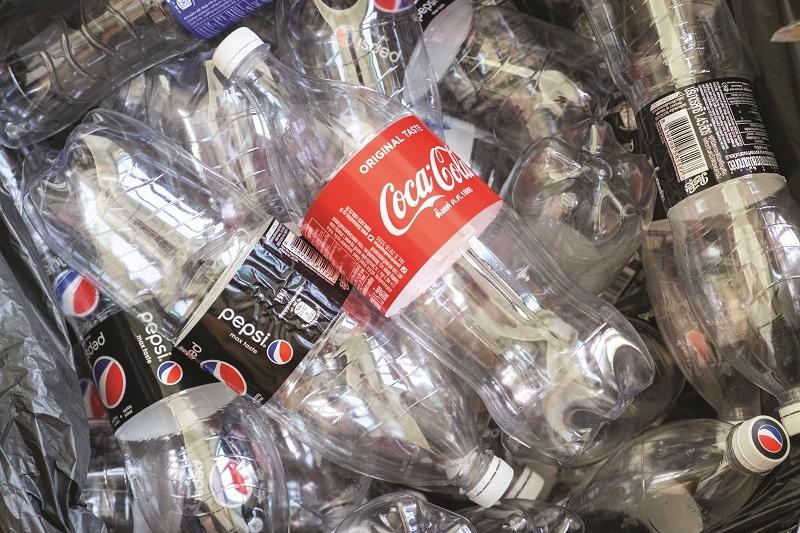Local packaging manufacturers go green
 |
| By Bui Quang Sy-Deputy general director, Thuan Duc JSC |
Recycled plastics are gradually replacing regular plastics to deal with the persistent pollution tied to the industry, following policies issued by numerous governments to rein in plastic waste.
Notably, in October 2018, the European Parliament approved new EU-wide rules, obligating EU governments to adopt measures to drastically reduce the use of single-use plastic carrier bags. Simultaneously, governments have been encouraging consumers to switch to recycled PP (one of the safest commercial plastics varieties) bags.
In early July 2018, Australia issued a ban on single-use, lightweight plastic bags at major retailers. Two of the largest supermarket chains in Australia – Coles and Woolworths – became the two first retailers to implement the policy. As a result, the country reported an 80 per cent drop in single-use plastic waste in only three months.
After restricting single-use plastics, policymakers and environmental stakeholders went on to deal with plastic waste as numerous countries have decided to stop importing plastic waste. Notably, China, which was the world’s largest plastic waste importer, issued a ban on these products since 2017. EU countries have also issued a similar policy to avoid becoming the world’s dumping ground. All these doors closed channelled increasing amounts of waste to countries that remained open, especially those in Southeast Asia, including Malaysia, Thailand, and Vietnam.
Vietnam and its neighbours have decided to turn the challenge into an opportunity by recycling and manufacturing waste into new products, including packaging. This helped bolster the supply of plastic materials, as local output has been limited while imports are pricey. In addition, the global demand for plastic packaging (excluding single-use plastic) is increasing.
At present, packaging manufacturers are facing strict competition from more than 2,000 players in the domestic market. In addition, they also have to compete with foreign-invested manufacturers which hold the advantages in machinery, technology, and management experience. Local companies holding large market shares include Casablanca Vietnam JSC, Kim Duc Trading-Producing Co., Ltd., and Thuan Duc JSC.
Soaring demand for plastic packaging
FPT Securities mentioned in a report on the plastics industry that packaging makes up the lion’s share of the plastics industry, accounting for 35 per cent of the total global plastic demand. The global demand for plastic packaging is expected to increase by 2.75 per cent annually in 2018-2020.
In 2018, 2.4 billion plastic packagings were consumed over the world. The usage of packaging in general and plastic packaging is directly proportionate to the countries’ GDP and average income per capita, according to FPT Securities’ report.
Statistics published by the General Department of Vietnam Customs showed that the main export markets of Vietnamese plastic products in 2018-2019 were Japan and the United States. Besides, the market demand for importing these products is also quite high. One advantage is that Vietnam is not subject to anti-dumping taxes the way other Asian countries are, including China. This is often touted as a favourable condition for Vietnam to increase plastic exports to the US and Japan.
The packaging segment has reported the fastest growth in the 2011-2016 period with increases of 10 and 6.6 per cent in 2018-2019. The potential of the segment remains large thanks to increasing expenditures on food and beverage, which will underpin the sector’s growth during 2019-2022.
According to a report by BMI Research, household expenditure was VND3.3 quadrillion ($143.47 billion) in 2019 and is expected to increase to VND4.7 quadrillion ($204.34 billion) in 2022. Expenses on food and non-alcohol drinks accounted for the largest percentage with 20 per cent of the total. The food sector is expected to increase by 11.8 per cent in the 2019-2020 period while the figure for non-alcoholic drinks is 12 per cent. These increases will accelerate the food processing industry, which is a major output market for the plastic packaging industry.
 |
| Local packaging manufacturers go green. Photo: Shutterstock |
Recycled plastics – a rising trend
The Vietnam Plastics Association reported that businesses can reduce production costs by more than 15 per cent if they recycle and reuse 35-50 per cent of their plastic waste. Opportunities for plastic waste recyclers include government incentives and the plastics industry’s demand for raw materials. Nonetheless, these businesses face the challenge of adhering to strict environmental standards by installing advanced machinery and technology.
The potential for recycled plastics is tremendous. According to a report by Ipsos Business Consulting, a global growth strategy consultancy based in Paris, Vietnam’s per capita plastic waste is the third-highest in Southeast Asia, after increasing more than 10-fold in the last three decades.
The country generates 1.8 million tonnes of plastic waste annually but recycles only 27 per cent. All this waste could serve as ample material for the manufacturing of recycled plastic products.
As a prime example, PP woven sacks, due to their strength, durability, and ability to withstand environmental stress and wear and tear, are a great packaging solution for the shipping and transportation industries.
Thanks to the above advantages, PP bags are growing into key export goods for Vietnam, especially to Europe which shows great demand for plastic bags.
Biodegradable plastics
Along with recycled plastic packaging, manufacturers have produced biodegradable plastic bags that can break down in less than three years into CO2 and water when buried. Bioplastics are 100 per cent compostable thanks to the effects of bacteria which turn it into harmless natural substances. Bioplastics made of cornflour can be used as fertiliser after disintegration.
To make bioplastics, enterprises need high technologies, modern machines, and powerful financial capability for research and development. There are about 10 companies in the world which can make compostable products. Only products made of bioplastics are 100 per cent degradable.
These products differ from decomposing bags which disintegrate into small pieces which then drift into the sea or remain in the air, harming the environment.
The governments of developed countries encourage people to use biodegradable plastic packaging to decrease the environmental damage wrought by plastic waste. The global biodegradable plastics market, valued at $4.71 billion in 2019, has been witnessing unprecedented growth.
Growth opportunities in the biodegradable plastics market are also backed by concepts like corporate social responsibility and decreased dependence on synthetic resources.
Competition to differentiate products in food and beverage, textiles, pharmaceuticals, and consumer goods is expected to augment the biodegradable paper and plastic packaging market. The changing lifestyle of consumers, along with increasing demand for packaged food products in developed markets are putting wind in the sails of biodegradable plastics packaging. The rising awareness among farmers to build green farms has also boosted the use of biodegradable plastics in agriculture while the growing electronic, medical, and automobile industries are also showing a mounting need for these materials.
The government has issued preferential policies encouraging businesses to procure modern waste (including plastic waste) recycling equipment and technology. Plastic waste recycling is expected to minimise dependence on plastic imports and meet 50 per cent of the demand for raw materials for domestic plastic production.
The Vietnam Environment Protection Fund (VEPF) is enabling plastics recycling enterprises to access preferential credit at an annual lending rate of 2.6-3.6 per cent, with loans to cover up to 70 per cent of the project investment capital. Environmentally friendly technology solutions must be applied in plastics recycling and reuse, and the production of biodegradable plastic products. The VEPF encourages plastic recycling businesses to prioritise the use of domestic plastic waste.
These positive signs will raise opportunities for local manufacturers to increase investment and expand their operations in the biodegradable plastic packaging manufacturing segment.
What the stars mean:
★ Poor ★ ★ Promising ★★★ Good ★★★★ Very good ★★★★★ Exceptional
Related Contents
Latest News
More News
- Heavy industries set for pilot greenhouse gas quotas (December 25, 2025 | 10:00)
- Swedfund invests in MSME growth and climate action in Vietnam (December 19, 2025 | 11:42)
- GreenYellow brings solar energy to light up remote schools in Tuyen Quang province (December 19, 2025 | 08:00)
- Charge+, Grab partner to develop EV charging network in Vietnam (December 18, 2025 | 17:11)
- Linking sci-tech and innovation to Vietnam’s net-zero future (December 18, 2025 | 14:31)
- Driving double-digit growth through green and circular transformation in Vietnam (December 17, 2025 | 09:00)
- Standard Chartered and ACCA deepen collaboration to develop Vietnam’s talent for a sustainable future (December 15, 2025 | 18:18)
- Schaeffler reports strong early output from Dong Nai solar project (December 12, 2025 | 15:16)
- Forestry conference highlights biodiversity and sustainability goals (December 09, 2025 | 13:35)
- Home Credit honoured among top 10 sustainable companies in trade and services (December 09, 2025 | 12:18)

 Tag:
Tag:





















 Mobile Version
Mobile Version